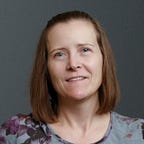The secret to better medicine is hiding in plain sight
When gazing into the crystal ball at the future of medicine, it’s easy for your eyes to fix on the new and the shiny.
Without a doubt, advanced treatments like cell therapies and tools like artificial intelligence merit more than a glance. Off to one side are other things — evolving policies and pricing and programs. Of course, you’ll see healthcare professionals, off to the other side. Books have been written on these topics and their interplay. But peering deeper, you’ll be able to pick out the thread that ties them together, and perhaps matters most of all ‒ the people seeking health and wellness. We’ve been here all along.
And many of us are willing to take on a bigger role than ‘patient.’ There’s a growing movement to engage patients in their treatment and expand their role to improve the way medical research is conducted, communicated, and translated into practice. Initially spurred by patients, the health initiative called public involvement (formerly patient and public involvement) in the UK is spreading around the world. How and when patients spread their wings varies by where they live, their disease or disorder, among other factors.
Here are the stories of four patients turned advocates
Clinical trials, which are required before a new medicine is made available to the general public, can’t happen without patient volunteers. That’s how Nicole Gularte got started. From there, she became an advocate for advancing cancer treatment with therapies like her own. She made the rounds at scientific conferences, fundraising events, and even visited my company, which makes equipment used to produce her personalized therapy. You can hear about Nicole Gularte and her CAR T cell therapy on the Discovery Matters podcast. Sadly, Nicole lost her fight since the episode aired.
Caleb Egwuenu started a different way. After beating lung cancer, he joined the inaugural cohort in a program that guides patients to become patient research advocates. Paired with a mentor, Caleb learned to effectively interpret research articles, decipher clinical trials, and bring the voice of the lung cancer community to research and policy. His journey took him to Barcelona, where he spoke at an international conference.
Staying closer to her hometown in the Mississippi Delta, four-time cancer survivor Barbara Young was inspired by her experience to do health outreach. Barbara, a community health advisor, helps to expand cancer awareness and prevention to rural, largely African American communities with high cancer rates.
Danielle Garcia Clark was diagnosed with Tuberous Sclerosis Complex (TSC) at age 30. Facing the likelihood of developing noncancerous tumors in many parts of her body, Danielle turned to her internet browser to find her ‘tribe’. She became involved in TSC advocacy, marching in Washington, sharing her story with her state’s representatives, and underscoring the importance of Federal funding to research her disease. Closing the advocacy loop, Danielle serves as a consumer reviewer on a federally funded research program, using her patient voice to direct funding to the most worthwhile projects.
Patients are gaining more control over their health and steering the direction of medicine. I wonder what other ways patients will contribute in the future.
Learn more
The Involve Foundation — home page. https://www.involve.org.uk/. Accessed July 7, 2020.
Patient-Centered Outcomes Research Institute (PCORI). The value of engagement. https://www.pcori.org/engagement/value-engagement. Last updated October 30, 2018. Accessed July 7, 2020.
Congressionally Directed Medical Research Programs — home page. https://cdmrp.army.mil/. Accessed July 7, 2020.
Cochrane Consumer Network — home page. https://consumers.cochrane.org/news/international_network. Accessed July 7, 2020.
